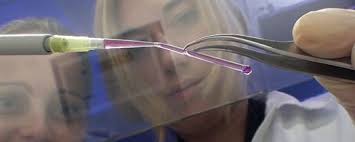HWN Jobs
- NIGERIAN NAVY (2016) JOBS
- EHEALTH SYSTEMS AFRICA (2016) JOBS
- LOCUM PHARMACIST JOBS IN A RETAIL PHARMACY
- FEDERAL MEDICAL CENTRE ABEOKUTA (FMC ABEOKUTA) JOBS
- RETAIL PHARMACY (OJODU, LAGOS) JOBS
HWN Blogs
- Classical heart healthy foods on HWN BLOGS
- Classical Warning Signs When The Human Liver Begins To Fail on HWN BLOGS
- Myths About Hygiene, Soaps, Germs, Sweat and Smell on HWN BLOGS
- Hernia does not heal on its own on HWN BLOGS
- Classical Essential Oils That Improves Focus Cum Memory on HWN BLOGS
news - Artificial blood vessels developed by scientists on HWN MEDICAL INTERVENTIONS back to all News
Artificial blood vessels developed by scientists on HWN MEDICAL INTERVENTIONS

Scientists from ITMO University developed artificial blood vessels that are not susceptible to blood clot formation. The achievement was made possible by a new generation of drug-containing coating applied to the inner surface of the vessel. The results of the study were published in the Journal of Medicinal Chemistry.
This is an artist's representation of the improved vascular graft. The enlarged section shows the drug-entrapping coating attached to the inner surface of the graft.
Surgery, associated with cardiovascular diseases, such as ischemia, often require the implantation of vascular grafts - artificial blood vessels, aimed at restoring the blood flow in a problematic part of the circulatory system. A serious disadvantage of vascular grafts is their tendency to get blocked due to clot formation, which results in compulsory and lifelong intake of anticoagulants among patients and sometimes may even require an additional surgical intervention.
In the study, a research team led by Vladimir Vinogradov, head of the International Laboratory of Solution Chemistry of Advanced Materials and Technologies at ITMO University proposed a solution to the problem. The team managed to synthesize a thin film made of densely packed aluminum oxide nanorods blended with molecules of a thrombolytic enzyme (urokinase-type plasminogen activator). Adhered to the inner surface of a vascular graft, the film causes the parietal area of the graft to get filled with a stable concentration of a substance, called plasmin, which is capable of dissolving the appearing clots.
The unique properties of the film arise from its structure, which represents a porous matrix, accommodating the plasminogen activator. The matrix protects the plasminogen activator from the aggressive environment of the organism, at the same time preserving the ability of the enzyme to interact with certain external agents through a system of pores. In particular, the matrix lets in plasminogen, a proenzyme naturally occurring in blood plasma. When plasminogen meets plasminogen activator inside the matrix, clot-dissolving plasmin forms.
Credit: ITMO University, HWN Africa.
HWN News
- First Polish infant to survive on extreme dialysis on HWN MEDICAL MIRACLES
- Drug resistant tuberculosis end game on HWN INSIGHTS
- Too many women opting for caesarean sections (CS) to give birth on HWN SEX EDU
- The intelligent, strong and fearless Nurse that conquered Ebola on HWN ARCHIVE
- Medhi Benatia, down with injury on HWN SPORTS






